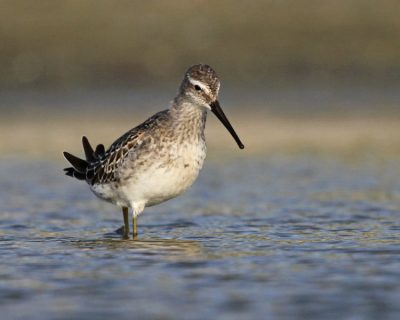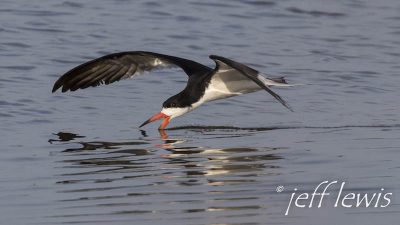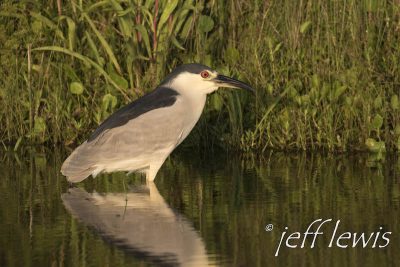Reprinted from The Outer Banks Voice.
August is here. And, hooray, fall shorebird migration is in full swing.
Supporter Spotlight
It doesn’t take these long-distance sandpipers, plovers and company to fulfill their parental duties in the far north, and they’re on their way back south for the “winter” – right through the Outer Banks.

Visit the Pea Island National Wildlife Refuge impoundments, ocean beaches and salt flats this month, and you’re apt to come away with a long list of plovers, sandpipers and other shorebirds to your credit.
But what’s the attraction? Why would you want to stand in the sun and heat just to see some old shorebirds? Or any other bird, for that matter? What is it about birds, anyway, that lures people out of their beds at the crack of dawn?
Well, let’s look into it.
Birds are exciting. For starters, they can fly. Watching their behavior can be incredible.
Supporter Spotlight
Have you ever watched a black skimmer slice the water in two, skimming for a fish? How about a flock of northern gannets diving into a school of fish from 50 feet high – striking the water like missiles? Awesome!
How about the acrobatics of a couple of hummingbirds competing for that nectar feeder in your yard. You haven’t lived until you’ve seen a bald eagle attack a coot, or watched a Merlin chase down a shorebird. Or watched a razorbill flying – underwater.
I could go on and on – but you get the picture – birds are super cool. Birds are really beautiful. What in life is prettier?
Think of the brilliant orange and black Baltimore oriole, or the bright red of our common northern cardinal, with his handsome crest.
Some birds, like painted buntings, are downright gaudy with their blues and greens and reds.
How about the stunning black and white pattern, complete with a long, forked tail, of a swallow-tailed kite.

Flip through any bird book and be amazed at all the colors and patterns. Even the little brown jobs are gorgeous, when you really look at them.
Most birders like the challenges and rewards of searching for and identifying birds, especially new birds – species they’ve never seen before. And the playing field is – anywhere outdoors. What could be better than that?
The quest for rare species is like combining hunting and collecting, except, at the end of the day, there is no game for the table or trophy for the wall.
In birding, you hunt birds, but you don’t shoot, and you collect memories (and photos, sometimes). Like hunting, it takes preparation.
To successfully find the species you’re after, you first need to learn how to identify them. Some species are very unique in appearance and identification is straightforward.
Others can be downright tricky; in fact a few can be identified only by their call.
It also helps to understand their life history – the habitat they prefer, their food preference, the time of year that they are most likely, the time of day they are most active.
Maybe they are easier to find on a low tide, perhaps during a full moon, maybe with a Northwest wind blowing – these things can matter.
Rare birds are usually migrants, and are often birds that are seen only once or twice a year, sometimes less often, usually under certain conditions during a certain season.
Sometimes you can look for 20 years, or a lifetime, without finding a particular “nemesis” target bird. But how rewarding it is when you finally succeed.
More often, rare birds come to you – suddenly, unexpectedly and often for only seconds. That’s why it pays to have studied ahead of time – you’ll already be familiar with their identifying field marks, their song and their habits. By cracking the books before you go out, you’ll be rewarded with a rare sighting instead of going home wondering what it was that got away.
The rarities that are the most exciting of all are the birds that are completely out of range – accidental – like the crested caracara (a Texas and Mexican raptor) that turned up in Buxton a few years ago, or the broad-billed hummingbird from Mexico that spent several weeks at a feeder in Southern Shores this past winter, or the curlew sandpiper, a Eurasian species, that is hanging out at Pea Island, even as I write this article.
These are the birds that birders dream about – the reason they wake up at 5 a.m.
Many bird watchers enjoy keeping lists of the birds they’ve seen. Most have at least a “life list” – a list of all the (wild) bird species that they have ever seen anywhere in the world.
Many also have a “state list” and a “yard list.” Of course, you can keep whatever lists you like: North American list, county list, year list, list of “birds-you’ve-seen-while-surfing” – you get the picture.

These “honor system” lists give birders a little extra motivation and can make the game a little more rewarding and competitive.
Some birders are very competitive, trying to set records for the most birds ever seen in one year (or even in just one day).
A movie was even made about competitive birding, titled “The Big Year,” starring Steve Martin, Jack Black and Owen Wilson. It was a hoot.
Some people like to go birding for the companionship. They prefer groups and enjoy the social aspects. They may even make new friends.
If you are new to the sport, birding in groups is a good way to learn about birds or at least pick up some birding tips. Plus, with more sets of eyes, more birds can be spotted, potentially.
Birding alone allows one to connect with nature on a more personal level. You can move quietly, at your own pace, listening for the most subtle of sounds. You can study nature at your leisure.
Going solo can be very calming and is a great way to escape your troubles or unwind from a hard day at work.
Personally, as a birder and a photographer, I can be stealthier and approach my subject much more closely if I’m birding alone. I can wait out a bird (or other animal) until it moves into the open, or until it does something exciting, like catches prey.
In general, I enjoy birding alone or with a friend or two if birding for songbirds in the woods, and I enjoy the comradery of groups when scoping for shorebirds or waterfowl, where noise isn’t as much of a factor.
Now, let’s get back to those August shorebirds at Pea Island.
In the plover category, search through the black-bellied and semipalmated plovers for an American golden plover, hard to find, but possible. Look especially in wet, grassy areas.
Look also for piping plovers on the beaches and mudflats. Wilson’s plover is a possibility.
Two of our prettiest shorebirds, black-necked stilt and American avocet, are both present now. Look for them in the impoundments, especially South Pond.
Various sandpipers should be present in good numbers. Sort through them and you should be able to identify at least a dozen species, on a good day.
Of course, they’re all good days if you’re out birding!
This story is provided courtesy of the Outer Banks Voice, a digital newspaper covering the Outer Banks. Coastal Review Online is partnering with the Voice to provide readers with more environmental and lifestyle stories of interest about our coast.








